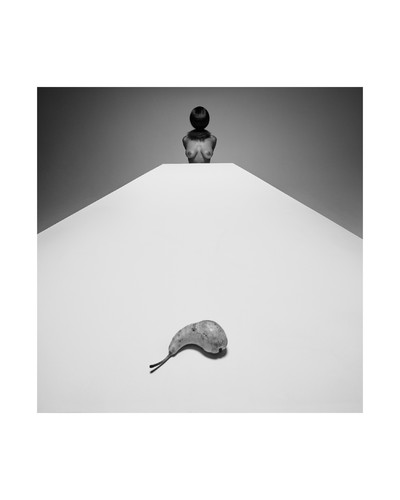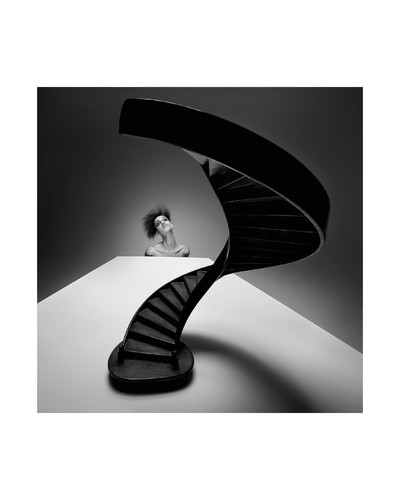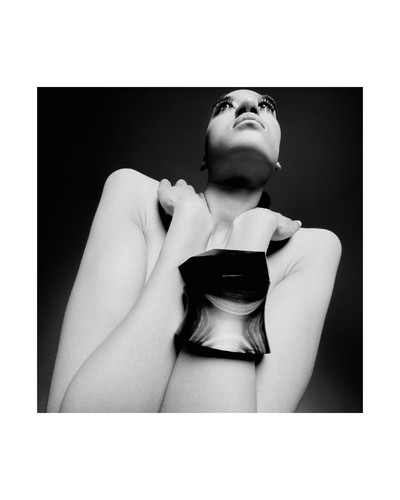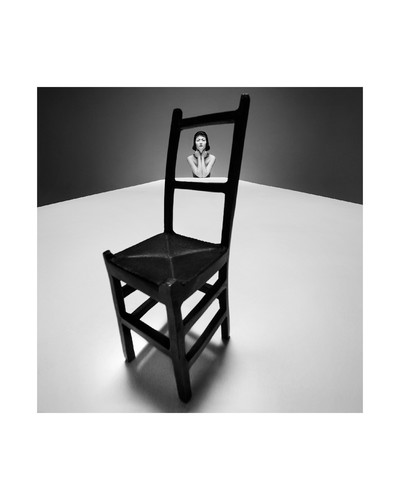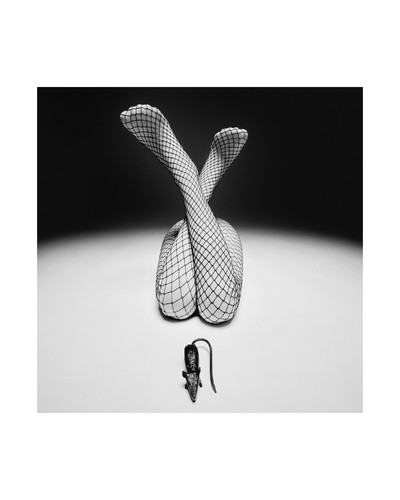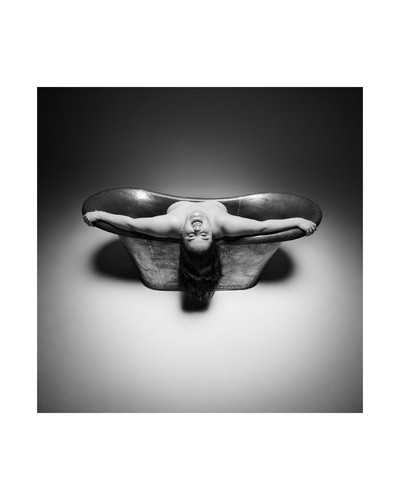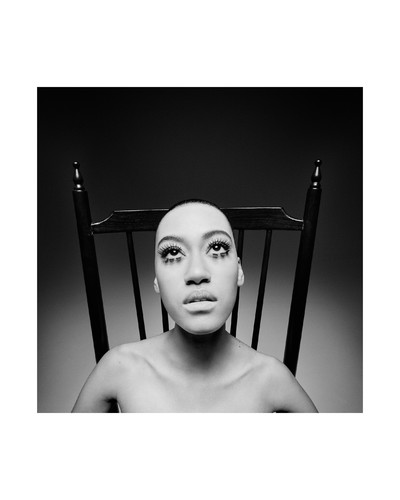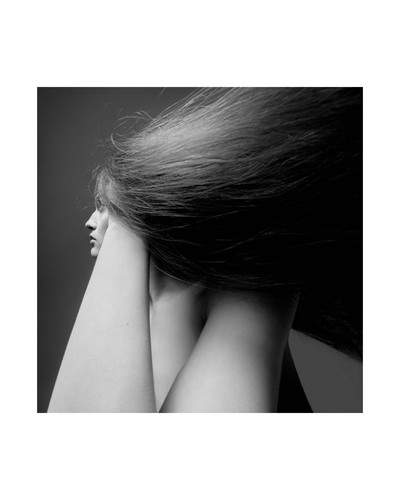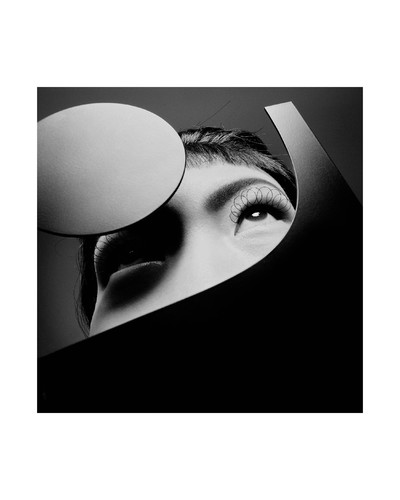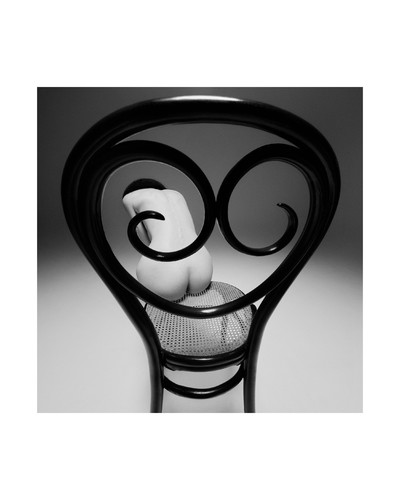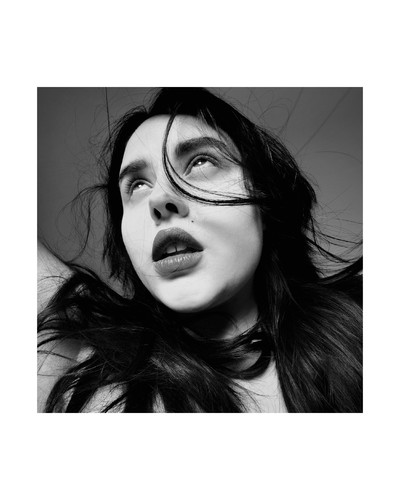Photographer Julien Martinez Leclerc abstracts the conventional with his striking beauty vernacular.
Photographs by Julien Martinez Leclerc
Hair by Olivier Schawalder
Make-up by Thom Walker
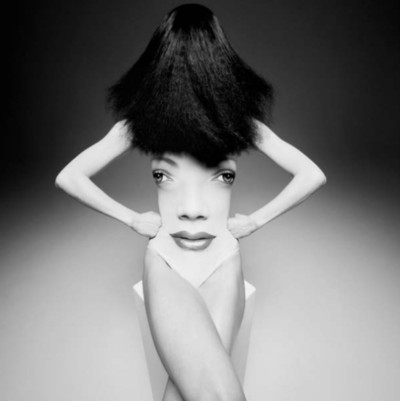
Photographer Julien Martinez Leclerc abstracts the conventional with his striking beauty vernacular.
For Julien Martinez Leclerc, beauty lies in the detail and the connection he shares with his subject. Since graduating from London’s College of Communication in 2017, the photographer and filmmaker has developed a striking and singular style: a monochromatic framework of symmetry, sharpness and severity. Now nearing ubiquity, his portfolio boasts an absorbing client list: Chanel, Louis Vuitton, Miu Miu, Hermès, Bottega Veneta, Moncler and Christian Dior – a rare entity for a photographer of 28 years old.
Martinez stepped into the spotlight in 2014 with his masterful use of lighting and rigorous capacity to create architectural structures out of compositional lines, realising the almost obsessive attention to detail required for creating expressive and evocative beauty imagery. Backed by philosophical considerations and his deep respect for both art and photography’s rich histories, in particular the work of Vincent Van Gogh and Paul Cézanne, as well as ‘60s fashion photography doyens, Bill Brandt and Steven Meisel, Martinez’s work combines a lightness of touch with a concept-driven understanding of proportion, distortion, character and contrast. Here, Martinez speaks to System beauty about refining his unique language, the fantasy of proportion, and the enduring appeal of the in-person experience.
Rahim Attarzadeh: When were you first exposed to beauty?
Julien Martinez Leclerc: It was probably through paintings by Van Gogh or Picasso because that formed my education. I’m often drawn to bodies of work that feel truthful, obsessive and original. I like to identify repe- tition of motifs in the work of an artist because it’s a sign of perseverance and quest. I am on a quest to find out what my artistic truth is, to find out what lies deep inside. The challenge of working in fashion is that it is a constant distraction to getting to that truth because there is so much more in the equation than just myself. The deconstruct-reconstruct ethos consistently underpins your work.
Is this modus operandi something you have developed consciously or subconsciously since you started out? What forms your initial starting point?
My starting point is always a dialogue with my own work. I have different chapters within my work, like seeds I plant. When I start a project, I generally look back at a picture from a couple months or even years ago and if the intention still excites me I will push that idea and aim to make an enhanced version of that. I ask myself ‘how can it become a more mature, more perfected version of that same thing?’ I wake up every day and I think, ‘How can my work be better?’ It is that discomfort that drives me to the next project.
Does the feeling of self-acceptance play a role in your work?
I am in a phase of transition in my work and I feel the need to get closer to my subjects. Beauty photography as opposed to shooting fashion is facilitating that relationship by bringing you physically closer to your subject. Some of my fashion images are quite cold and severe – everything can be a bit mannequin-like, and I think I am moving away from that. With time, I can see myself allowing more emotion and warmth to come through the photographs. The thing with shooting a silhouette is that there is a lot more to deal with in terms of clothes, details, posture. Therefore, the emotional bond can be easily lost. When your focus is solely on the face there is less distraction and I can connect with my subject on a deeper level. A regret I often have when I leave a shoot is to think, ‘I have no clue who that person I just photographed was!’ I wish I had more time to get to know my subjects.
Stylistically, your work recall the great ‘60s fashion photographers. How does your appreciation of the past enable you to contextualise the present?
I reflect a lot on photography before I take photographs and unavoidably that appreciation of the past comes into play as I am creating my own language. I personally love when a photograph is grounded in art and fashion photography history. A picture with strong referencing acts to me a bit like a madeleine de Proust. If I see a picture by Juergen Teller and I sense that he has seen a painting by Cézanne, that connection touches me. It anchors the image on a timeline of art history and forms a gateway in order for the past and present to have a dialogue with one another.
Your approach differs from more recent trends in fashion and beauty photography in the sense that it feels more subtle and quietly considered. Through this, do you think that you have started to form your own aesthetic?
I believe you could say there is a spirit emerging and a red thread. It is like a draft that is coming together slowly and I think there is a lot more I will surprise myself with. I am very con- sidered with the things that I show. If I feel like I have nothing interesting to say then I prefer to remain silent. There is so much ‘noise’ out there and I don’t want to add to the confusion. When it comes to creating my own aesthetic, I do think there was a lot of comfort in the beginning to use references almost to shield myself from criticism and maybe as a way to conform to what fashion photography should be, and feel validated. It takes time to feel ready to ‘appear’. I always think of Helmut Newton and how conventional his work was for decades until he started to create the work that got him acclaimed. I am careful to never underestimate anyone because you never know what lies in the deep end waiting to emerge. Photographers should be allowed more time to develop their vision and sometimes I find myself pressured by the rhythm of things. Development takes time and I am very lucky to have the support of a few mentors who have guided me in my journey to self-discovery.
Tell me about the story you put together for this issue. What impulses did you want to create around the human body?
I wanted to work with Olivier Schawalder as I think perfection is synonymous with his work, especially his wig work. The idea for this story was something along the lines of beauty meets design. I had never seen a beauty shoot involving furniture in that way. In terms of scale it is not easy to fit both a whole chair and a face in the same frame. I had a lot of Picasso paintings in my head, where perspectives are challenged and you see bits of chair popping out here and there around the model, where they merge into one another.
What is the significance of proportion and distortion within beauty photography?
A photograph is so impersonal in a way, as it is made by a machine, and I think the distortion helps me mould what is in front of me. It’s a bit like sculpture. I find that distorting the image brings me closer to my emotional experience of reality. Almost to express how life cannot be contained. To become the architect of space allows me to appropriate the subject.
How much consideration do you give to the hair and make-up in your beauty imagery?
I think for any photographer who is meticulous, they will tell you that hair and make-up is a great part of the picture. I don’t think you can create a good fashion image if you don’t have the right hair and make-up. It’s a very odd language that creatives speak together on a shoot. You just know when something is right, the same way you know it’s wrong. It has to be a mix between something purely instinctive and a common understanding of what good taste is. Sometimes I look at pictures and I think, ‘It would be a beautiful picture if that eye makeup wasn’t there’. It is interesting how sometimes just the wrong eyeliner or the way the hair is done can make an image completely dull.
